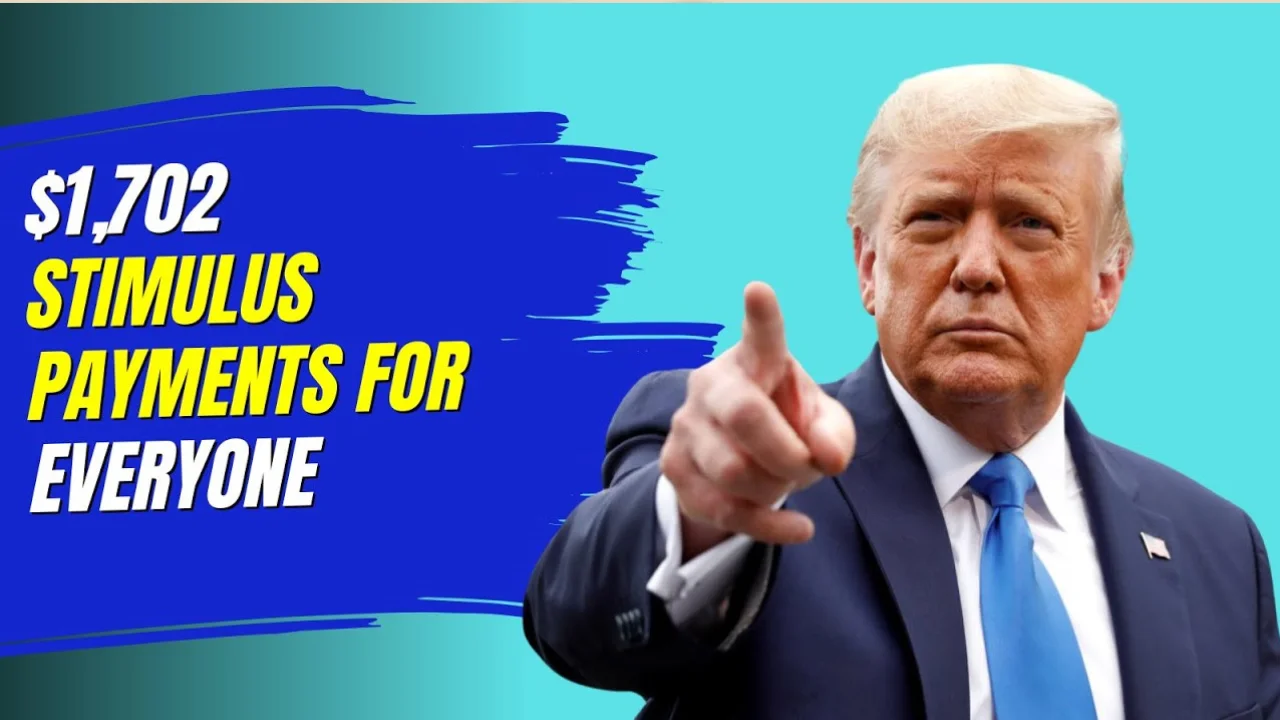$1,702 Stimulus Payment for Everyone : In a move aimed at providing financial relief to millions of Americans, the government has confirmed a $1,702 stimulus payment scheduled for October 2025. This payment is part of a wider economic support package designed to help households manage rising costs of living, inflation, and ongoing recovery efforts. Families, seniors, and workers across the country are set to benefit, making it one of the most talked-about announcements of the year.
Federal $2,000 Direct Deposit Payments Coming in October 2025
Why $1,702 Stimulus Payments Are Being Sent
Over the past few years, many households have faced financial strain due to rising food prices, rent increases, and healthcare costs. To ease the burden, the government has launched new stimulus programs. The $1,702 payment is designed to put extra money in people’s pockets so they can cover essentials, pay down debts, or simply stabilize their monthly budgets.
This payment is part of a continuing commitment to ensure that low- and middle-income families, retirees, and even certain workers in specific sectors receive financial relief in 2025.
Who Qualifies for the $1,702 Stimulus Payment?
Eligibility has been a key concern for millions waiting to know if they’ll receive the payment. While guidelines may vary slightly depending on states, the following groups are expected to qualify:
-
Seniors on Social Security, SSI, SSDI, and VA benefits
-
Low- and middle-income households based on annual income thresholds
-
Workers meeting income eligibility requirements
-
Families with dependents may see adjusted amounts in some cases
The government has emphasized that payments will be automatic for those who already filed taxes or receive federal benefits.
How Will the Payments Be Sent?
Payments are expected to be distributed through:
-
Direct deposit (fastest method, sent straight to your bank account)
-
Paper checks for those without banking details on file
-
Prepaid debit cards in certain cases, similar to earlier stimulus rounds
Most people will not need to apply separately—the payment will be sent automatically if they meet eligibility rules.
October 2025 Full Payment Schedule
The schedule for distribution is spread across the month of October to ensure smooth processing. Here’s the tentative timeline for payments:
-
Week 1 (October 3 – October 7): Direct deposits to seniors on Social Security (SSI, SSDI, VA benefits)
-
Week 2 (October 10 – October 14): Direct deposits for tax filers with bank accounts on file
-
Week 3 (October 17 – October 21): Paper checks begin mailing for those without direct deposit
-
Week 4 (October 24 – October 28): Prepaid debit card disbursements and final batch of payments
By the end of October 2025, all eligible Americans are expected to receive their $1,702 payment.
How to Check Your Stimulus Payment Status
Individuals will be able to check the status of their payment through:
-
The IRS online portal (for taxpayers)
-
Social Security Administration (SSA) website (for seniors and beneficiaries)
-
State payment systems (for residents receiving state-level stimulus adjustments)
These portals will update with payment status, estimated deposit dates, and whether a paper check is on the way.
What Should You Do If You Don’t Receive Your Payment?
If you haven’t received your stimulus payment by early November 2025, here are the steps to follow:
-
Check eligibility – ensure you meet income and residency rules.
-
Verify banking info – sometimes incorrect or outdated bank details delay payments.
-
Look for mailed checks – paper checks take longer to arrive.
-
Contact IRS or SSA – if your payment is missing or delayed, you may need to file a request.
Why October 2025 Stimulus Is Important
The $1,702 stimulus payment comes at a crucial time. Inflation has made daily essentials more expensive, and many families are still recovering financially. This payment ensures that seniors can manage their healthcare costs, families can keep up with bills, and workers can ease the pressure of rising living expenses.
For millions, the October 2025 stimulus isn’t just a one-time deposit—it’s a much-needed boost to maintain financial stability heading into the end of the year.
